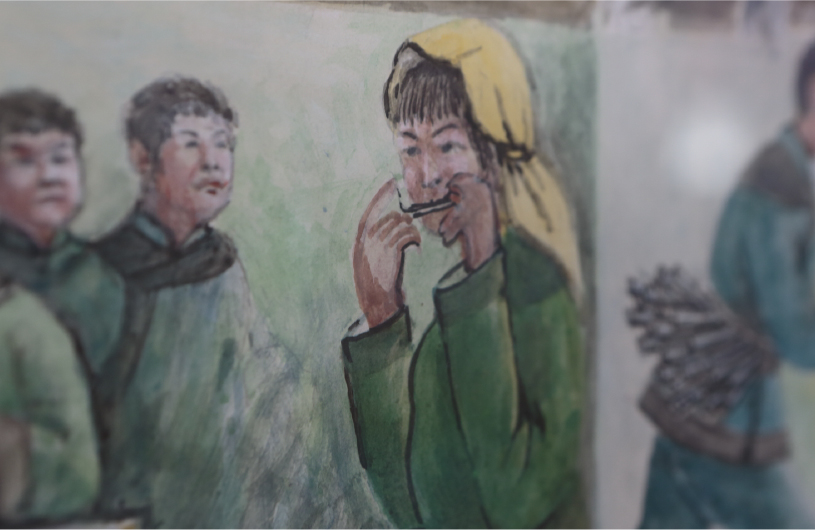
A watercolor painting of the Hezhen

A watercolor painting of the Hezhen
Shigeru Kayano, who established the Kayano Shigeru Nibutani Ainu Museum, gathered everyday Ainu items now regarded as folk art and Ainu words and wished for the resurrection of the Ainu languages from the bottom of his heart.
In 2015, when Anatol P. Donkan, a fish leather artisan living in Germany, visited Nibutani, he gave me a tour of the museum, saying, "In here there are paintings that are like treasures for the Nanai, who are my roots."
Historically an indigenous people of the Siberia's Amur River Basin who have a fish leather processing culture, they lived on both sides of the river and were called the Nanai on the Russian side and the Hezhen on the Chinese side. Today that traditional craft is dying out.
Forty-eight watercolor paintings by You Yonggui, a Hezhen painter, are on display on the museum's second floor. They depict Hezhen customs from before the Cultural Revolution, among other things.


Donkan was born in Siberia. He studied art at a university in Khabarovsk, Russia, encountered Nanai idol carving and experienced an awakening to his own roots and traditional culture. He learned that there are Ainu not just in Sakhalin, but also in Japan, and became interested. The carving "Shigeru Kayano's right hand," made by Donkan as an expression of gratitude for meeting Kayano 24 years earlier and having been assisted by him, is also on display. Donkan gave it to Kayano as a present. It re-creates the index finger Kayano cut off with a grass cutting implement when he was child.

Shigeru Kayano's son Shiro Kayano, who succeeded him as museum head, realized the importance of the Ainu languages when he visited Alert Bay in 1987 to interact with the Kwakwaka'wakw, an indigenous people of Canada.
"At the time the native speaker in Alert Bay was 85 years old. And because my father, at age 61, was the youngest Ainu language native speaker, I felt that there is still hope for the Ainu languages," Shiro said.
At a Nibutani town elementary school, it was decided that Ainu language classes will be included in the curriculum beginning in April of this year. Do you suppose Shigeru Kayano is rejoicing in heaven?
Kayano Shigeru Nibutani Ainu Museum 
The museum displays the personal collection of Shigeru Kayano, who was an Ainu people researcher and a member of House of Councilors. Many material on the way of life and industrial arts of not just the Ainu, but of indigenous and minority people around the world, are exhibited there.
79-4 Nibutani Biratori-cho, Saru-gun, Hokkaido
https://kayano-museum.com/